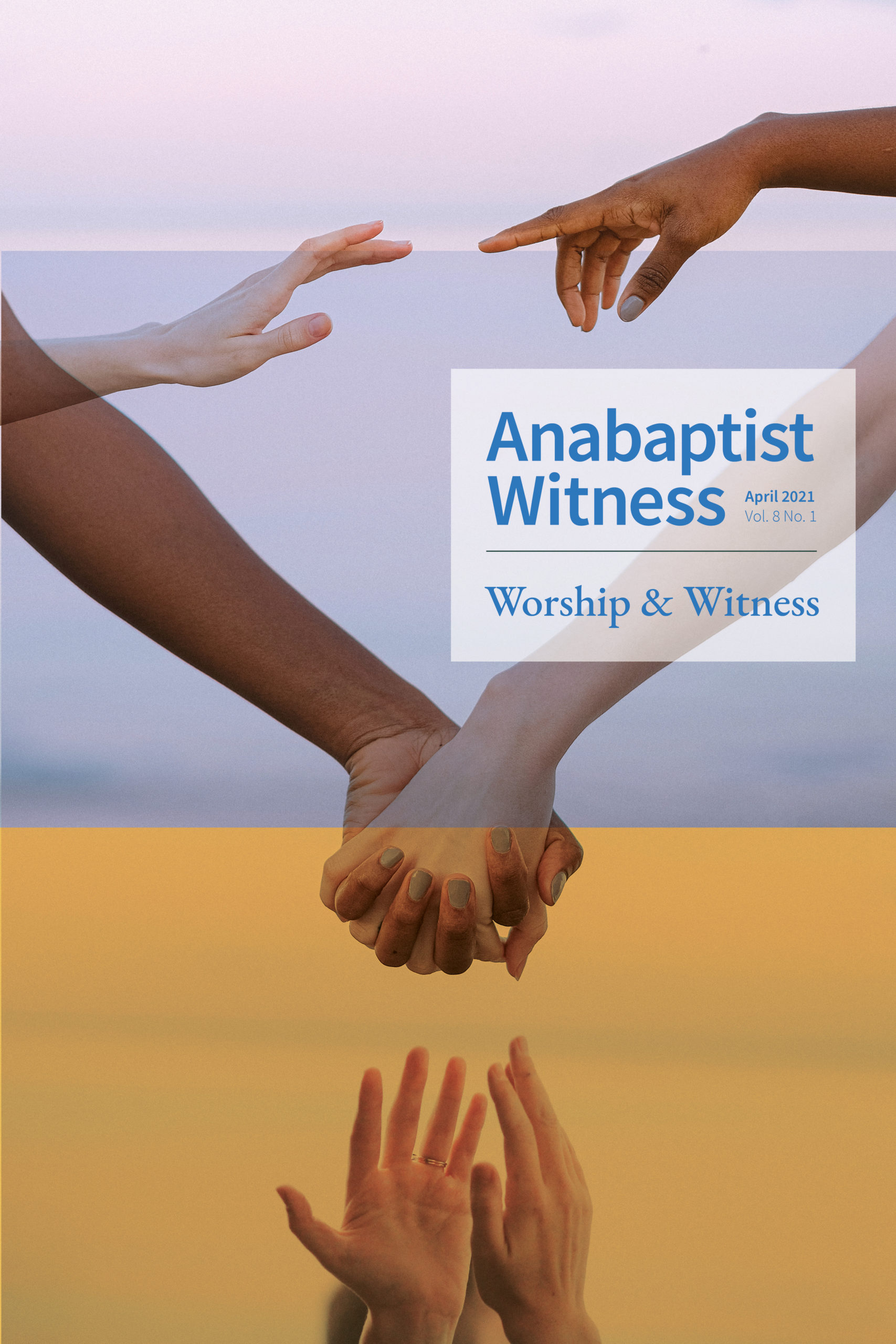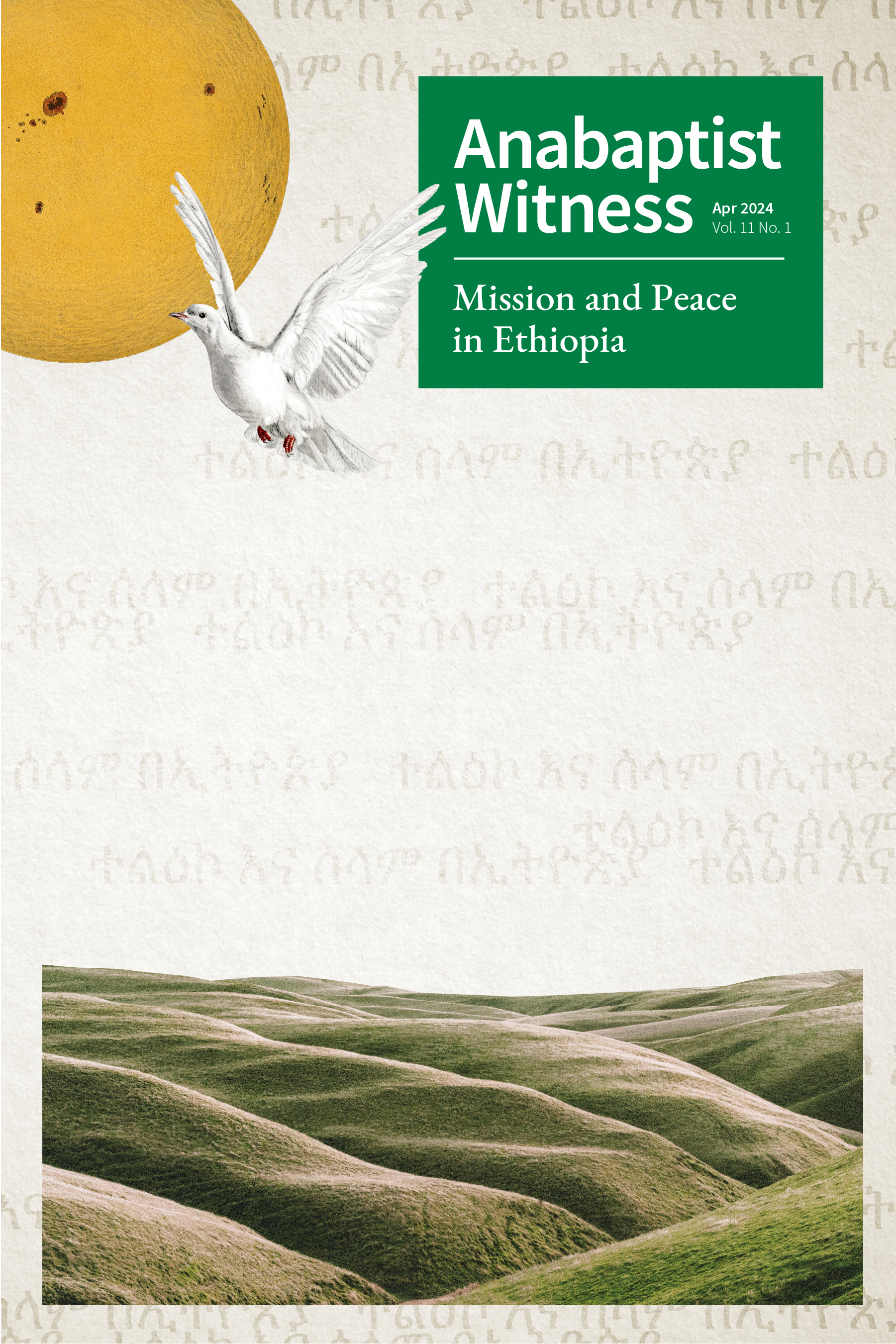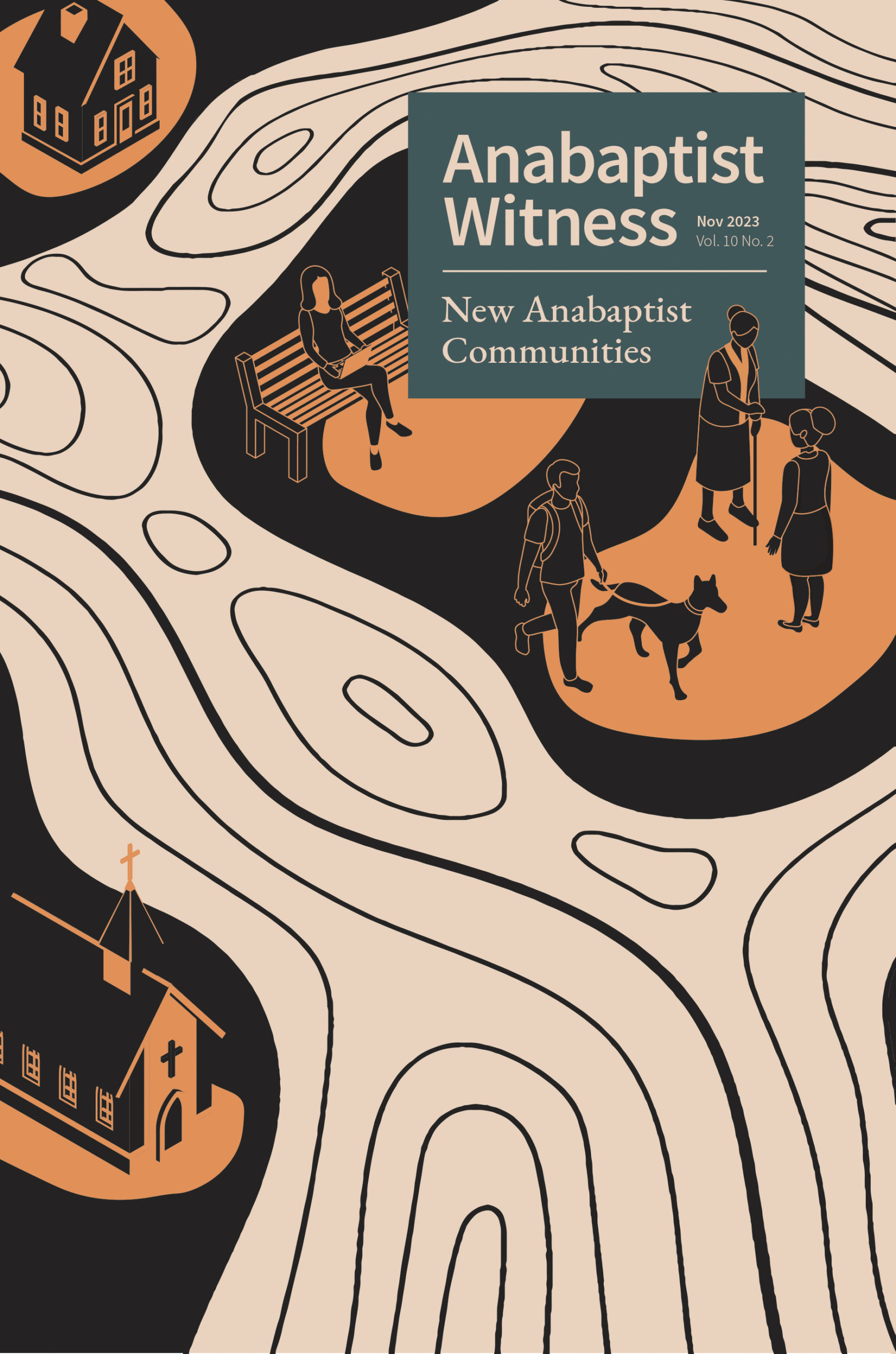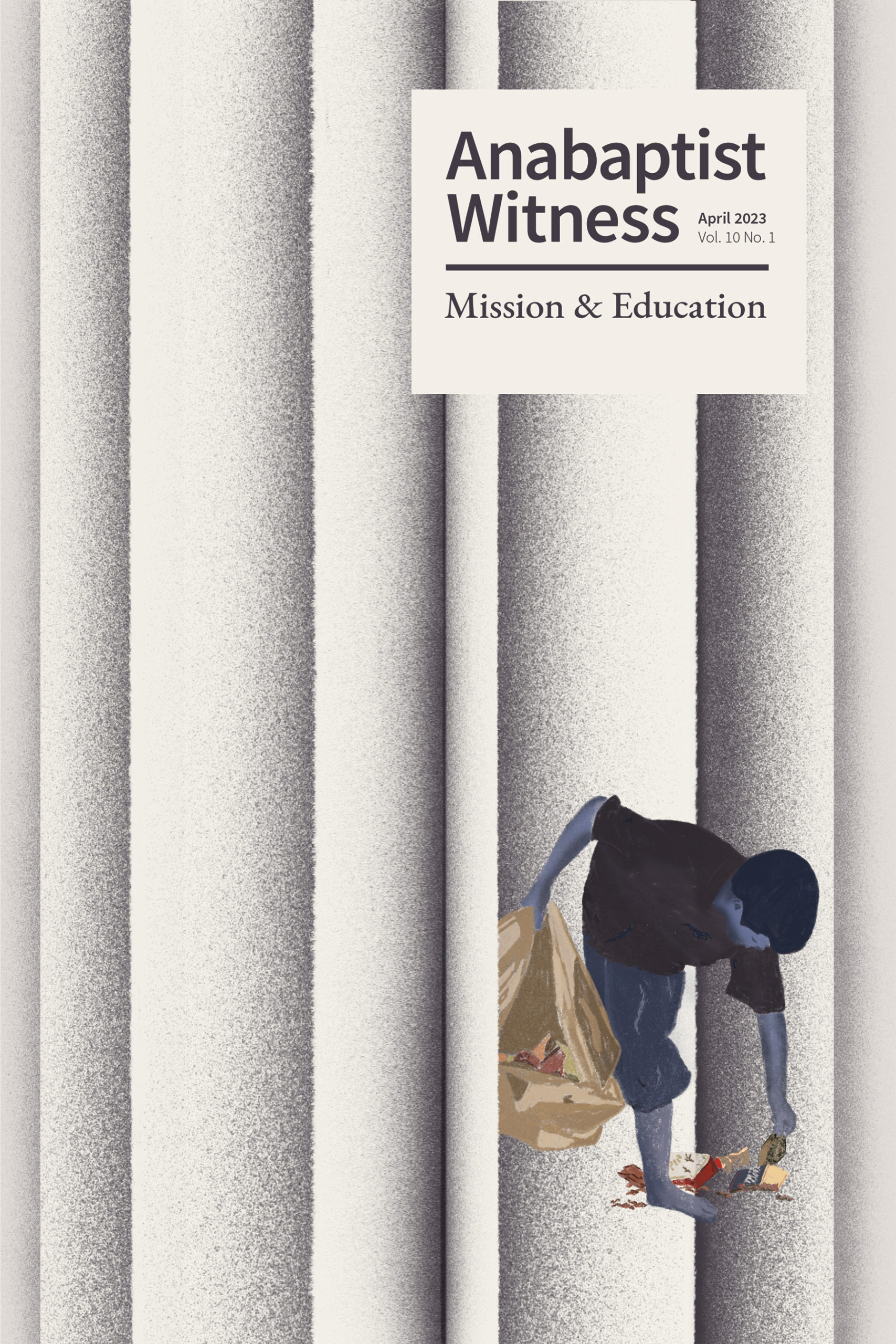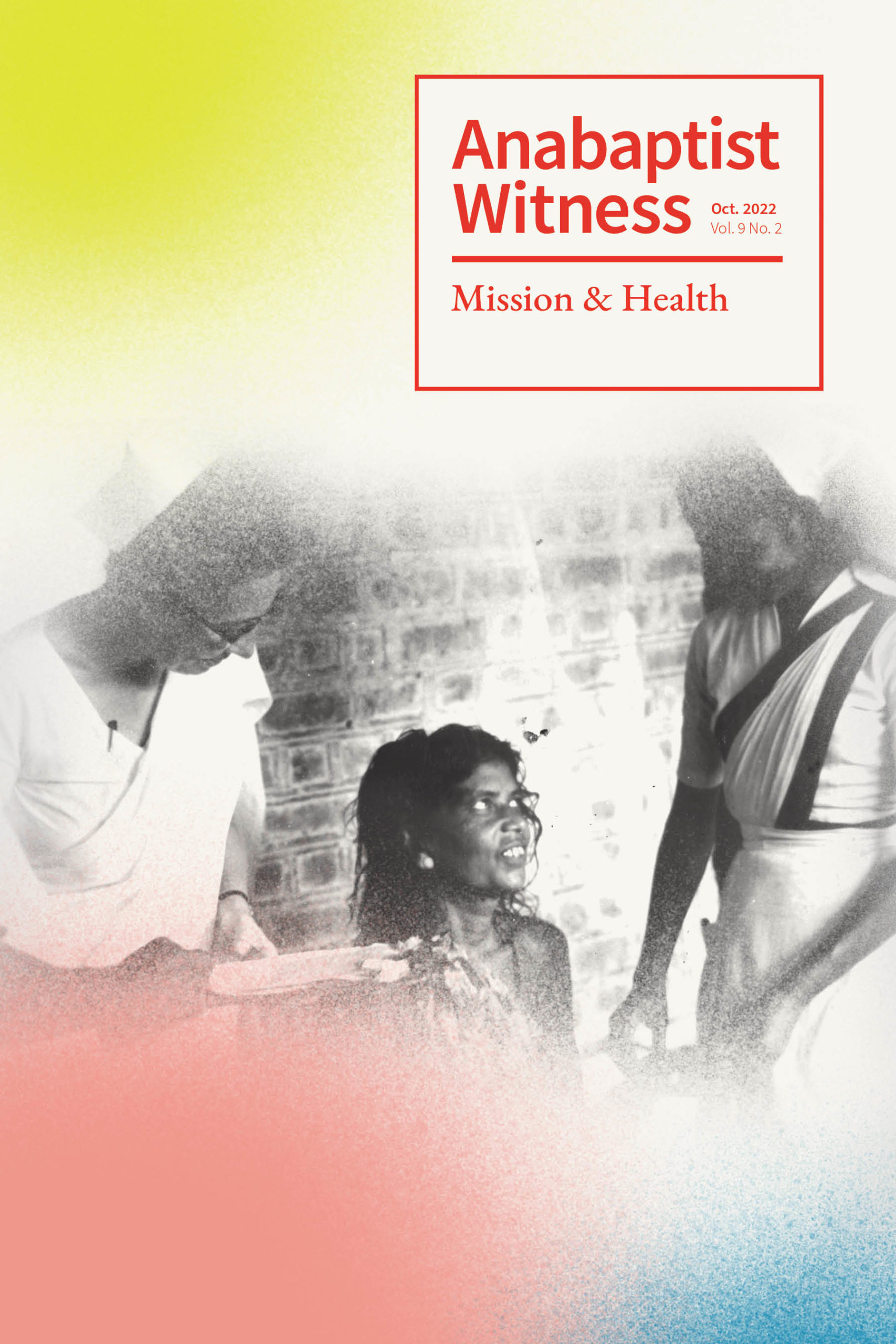Worship and Witness
About This Issue Download this issue
Worship and Witness
This issue of Anabaptist Witness explores many understandings of worship and expressions of witness.
To witness is to observe a statement or action or to profess one’s religious beliefs. We can witness God’s work in the world or humans’ good and harmful deeds. We can proclaim our beliefs, in words and actions, to one another within and beyond our faith communities.
Voices Together: Worship Leader Edition1 explores three uses of the word “worship,” each of which can relate to witness in many ways:
1.“Worship describes a way of relating to God, which includes expressions of praise and adoration, and also worshipping God through lives of loving service to others”(viii).
For example:
- A young adults’ group embarks on a reading week trip to Florida to participate in a Mennonite Disaster Service project.
- A community adds an LGBTQ+ symbol to their church sign, making it clear that their worship welcomes everyone.
- Individuals take meals to neighbors or other community members in times of difficulty.
2.Worship is “the gathering of a faith community—a worship service—and everything that is part of that gathering, including singing, preaching, praying, reading Scripture, engaging with visual art, celebrating communion, and more” (viii).
For example:
- A local congregation chooses music for worship that newcomers from their community can easily learn by ear.
- A church choir holds their choir practice in a local park, inviting bypassers to join in familiar songs.
- A live Christmas pageant draws thousands of local visitors who hear the story of Jesus’s birth.
3.Worship refers to “a specific part of a contemporary worship service that is focused on praising God through singing, perhaps accompanied by prayer or movement” (viii).
For example:
- A pastor ends their sermon with a call to commit or recommit one’s life to Jesus, inviting congregants to enter a new stage in their relationship with God.
- The local Chinese-speaking congregation and a predominantly white
English-speaking congregation gather together for worship, where both communities teach each other new contemporary worship songs that express praise to God.
This issue of Anabaptist Witness contains insights on each of these three facets of worship and the multitude of ways that they overlap with witness. The essays can largely be divided into two sections: those that closely relate to congregational life and those that go beyond a more traditional understanding of worship.
The first essay, by Janie Blough and James Krabill, provides a foundation by introducing a history of global Anabaptist worship as it relates to witness. After examining worship practices and ideas about mission since sixteenth-century Anabaptism, the authors interrogate the lasting effects of mission on Mennonite worship around the world today.
Tim Schmucker’s article on worship as reconciliation is an examination of Toronto United Mennonite Church’s process of becoming LGBTQ+ affirming—a journey that produced both harm and reconciliation. Schmucker analyzes the writings of ecumenical and Mennonite missiologists to understand how they position reconciliation within the mission of the church. He concludes that the congregation’s journey toward LGBTQ+ acceptance, and the subsequent reconciliation that occurred during worship, has been foundational to their church’s mission.
Jason Barnhart’s piece on the Lord’s Supper considers the political impacts of communion in Brethren circles, drawing on understandings of the Lord’s supper as a common meal that enacts a radical counterculture. He argues that when communion celebrates the gathered community as the body of Christ, national identities and other differences are set aside and the city of God is performed.
In the next article, Jonathan Minchala argues that the Spirit shapes Christian language and desire through the liturgy. This desire orients us to the beauty of God and a peaceable openness to creaturely diversity. At the same time, Minchala cautions that worshipers need rituals, speech, and music that both celebrates one’s culture and history and calls forth justice.
Several prayers included in this edition are available as practical resources to draw together worship and witness. The two prayers offered by Carol Penner help us consider how congregational listening and thanksgiving are forms of witness. Focusing on witness as people’s lives in relationship, Joanna Harader creates readings for worship that facilitate meaningful connections between people and God. The “All Saints Prayer” by Joel Miller invites congregations to use the confluence of All Saints Day and US elections to consider our clouds of witnesses.
Amy Yoder McGloughlin explores the meaning of worship beyond the scope of a “worship service,” in public protests for immigrant justice. Drawing on her own experience at protests, she explores dimensions of enacting one’s faith and convictions in a public and political sphere.
As Robert Thiessen and Anne Thiessen question the traditional view that the primary intent of missions is to produce worship, they express concern that such worship too often is culturally imposed. They support more recent models that relate mission to contextualized worship from which local congregations live into their own unique expressions of the fullness of the kingdom of God.
Debbi DiGennaro stretches the definition of worship in her study of yard signs as lived religion. She suggests that yard signs are one way of connecting beliefs to everyday life while also engaging neighbors through the public statement of values.
Marcos Acosta’s interview with Almendra Fantilli discusses her documentary El Culto on the worship practices of four evangelical congregations in Argentina. They discuss how Anabaptist ideas are evident in this documentary even though the communities represented are not themselves Anabaptist. Acosta and Fantilli consider how worship relates to culture, politics, and history and how the history of missionizing influences has left its mark on congregations today.
Five book reviews at the end of this issue address liturgy, traditional rituals, climate change, racism in Indigenous-Settler relationships, and Indigenous religious freedom.
This issue does not reflect a systematic definition of worship and witness; rather, it presents intersections of a multiplicity of those concepts. As you read, you may consider how worship and witness are enacted and intertwined in your own communities.
Katie Graber, guest editor
Anneli Loepp Thiessen, guest editor
